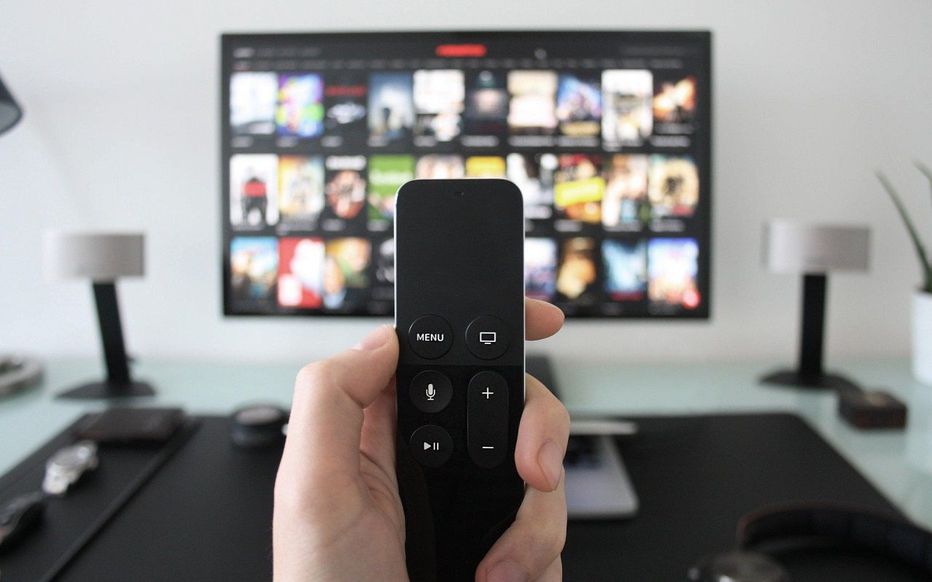
Outline
- Introduction
- Overview of IPTV
- Importance of understanding viewing patterns
- What is IPTV?
- Definition and functionality
- Comparison with traditional TV
- Why Analyzing Viewing Patterns Matters
- Benefits for service providers
- Benefits for advertisers
- Benefits for content creators
- Key Factors Influencing IPTV Viewing Patterns
- Time of day
- Day of the week
- Seasonal trends
- Special events and premieres
- Peak Viewing Times: A Deep Dive
- General peak times
- Variations by region
- Variations by demographic
- Impact of Time Zones on Viewing Patterns
- How time zones affect global viewing
- Strategies for service providers
- Weekday vs. Weekend Viewing
- Differences in viewing habits
- Popular genres and programs
- Effect of Seasonal times on IPTV Trends Usage
- Holiday seasons
- School vacations
- Major sports seasons
- Special Events and Their Influence
- Live sports
- Award shows
- Political events
- Demographic Influences on Viewing Patterns
- Age groups
- Gender differences
- Socioeconomic factors
- Technological Influences on Viewing Patterns
- Device preferences
- Internet speed and quality
- Platform features
- Content Preferences: On-Demand vs. Live Streaming
- Popularity of on-demand content
- Importance of live events
- Future Trends in IPTV Trends Viewing Patterns
- Predicted changes in technology
- Shifts in consumer behavior
- Strategies for Service Providers
- Optimizing content scheduling
- Personalizing user experiences
- Enhancing engagement through data analysis
- Conclusion
- Summary of key points
- The evolving landscape of IPTV usage
- FAQs
- What is the most common peak viewing time for IPTV?
- How do time zones impact IPTV viewing patterns?
- What demographic watches the most IPTV?
- How do special events affect IPTV viewership?
- What future trends can we expect in IPTV usage?
Analyzing Peak Viewing Times and Patterns in IPTV Usage
Understanding peak viewing times and patterns in IPTV usage is crucial for maximizing the potential of IPTV Trends, Best IPTV services, and IPTV smarters experts. By dissecting when and how people watch TV, providers can enhance user experiences and optimize content delivery. Whether you are an IPTV smarters expert or a newcomer looking for insights, this guide covers all you need to know about IPTVTrends login and usage patterns.
What is IPTV?
IPTV, or Internet Protocol Television, delivers television content over the internet, unlike traditional terrestrial, satellite, or cable TV. IPTV Trends show that it allows viewers to stream live TV, on-demand videos, and other multimedia content seamlessly. The flexibility and personalized viewing experience make it the Best IPTV option for many users today.
Why Analyzing Viewing Patterns Matters
Understanding IPTV Trends and viewing patterns in IPTV usage is essential for several reasons:
- Service Providers: They can optimize content delivery, improve customer satisfaction, and reduce churn by understanding peak viewing times. The Best IPTV services rely heavily on these insights.
- Advertisers: They can target ads more effectively by knowing when specific demographics are most active.
- Content Creators: They can schedule premieres and special events to maximize viewership.
Key Factors Influencing IPTV Viewing Patterns
Several factors influence IPTV Trends and viewing patterns, including:
- Time of Day: Viewership tends to spike during specific times, such as evenings and late nights.
- Day of the Week: Weekends often see higher viewing rates compared to weekdays.
- Seasonal Trends: Viewing patterns can shift with the seasons, holidays, and school breaks.
- Special Events: Live sports, award shows, and political events can cause significant spikes in viewership.
Peak Viewing Times: A Deep Dive
General Peak Times: Typically, peak viewing times for IPTV Trends are during the evening hours, roughly between 7 PM and 11 PM. This is when most people have finished their work or school day and are relaxing at home.
Regional Variations: Viewing patterns can vary significantly by region due to cultural differences and time zones. For example, prime time in the US differs from that in Europe or Asia. Understanding these regional differences is key for the Best IPTV Trends services and IPTV smarters experts.
Demographic Variations: Different age groups and demographics have distinct viewing habits. Younger viewers might prefer late-night viewing, while families may watch more during early evenings. These insights are crucial for tailoring services to meet the needs of various users.
Impact of Time Zones on Viewing Patterns
Time zones play a critical role in global IPTV Trends and viewing patterns. Service providers need to account for time differences when scheduling content releases or live events to maximize viewership across different regions. Strategies such as offering multiple time slots or on-demand options can help mitigate these challenges.
Weekday vs. Weekend Viewing
Weekday Viewing: Weekdays often have consistent but lower viewership compared to weekends, with peaks in the evenings. Popular genres include news, dramas, and reality shows.
Weekend Viewing: Weekends see higher viewership, with peaks occurring in the late morning and evening. Sports, movies, and family shows are particularly popular during these times. The Best IPTV providers and IPTV smarters experts can leverage these trends to enhance user engagement.
Effect of Seasonal Trends on IPTV Usage
Holiday Seasons: Viewership generally increases during holiday seasons as people have more free time to spend with family and friends, often watching TV together.
School Vacations: Children and teens are more likely to watch TV during school breaks, influencing overall viewing patterns.
Major Sports Seasons: Events like the Super Bowl, World Cup, and Olympics can lead to significant spikes in viewership. The Best IPTV services ensure they are well-prepared for these increases in demand.
Special Events and Their Influence
Live Sports: Major sporting events can cause massive spikes in IPTV usage. Viewers prefer watching these events live rather than on-demand.
Award Shows: Events like the Oscars and Grammys draw large audiences and can significantly impact viewing patterns.
Political Events: Major political events, such as elections and debates, can also lead to increased viewership.
Demographic Influences on Viewing Patterns
Age Groups: Younger viewers tend to watch more on-demand and late-night content, while older demographics might prefer live TV and evening news.
Gender Differences: Men and women may have different viewing preferences, influencing when and what they watch.
Socioeconomic Factors: Income and education levels can impact the type of content viewed and the devices used for viewing.
Technological Influences on Viewing Patterns
Device Preferences: The type of device used (smart TV, smartphone, tablet, etc.) can affect viewing habits and times.
Internet Speed and Quality: Areas with faster internet speeds tend to have higher IPTV usage due to better streaming quality.
Platform Features: Features like personalized recommendations, DVR capabilities, and user-friendly interfaces can influence viewing patterns. The Best IPTV services utilize these features to enhance the viewing experience.
Content Preferences: On-Demand vs. Live Streaming
On-Demand Content: On-demand content is increasingly popular, allowing viewers to watch what they want, when they want. Binge-watching TV series is a common trend.
Live Streaming: Despite the rise of on-demand content, live events such as sports, news, and special broadcasts remain highly popular and drive peak viewing times. IPTV smarters experts often balance both to cater to a wide range of viewers.
Future Trends in IPTV Viewing Patterns
The future of IPTV Trends and viewing patterns will likely be influenced by advances in technology and shifts in consumer behavior. Key trends to watch include:
- AI and Machine Learning: Improved recommendation systems and personalized content.
- 5G Technology: Enhanced streaming quality and reduced latency.
- Interactive TV: Increased viewer engagement through interactive features.
These future trends will play a significant role in shaping how the Best IPTV services operate and how users interact with content.
Strategies for Service Providers
To stay ahead in the competitive IPTV market, service providers can adopt several strategies:
- Optimizing Content Scheduling: Using data analytics to schedule content during peak times. Understanding IPTV Trends is crucial for this.
- Personalizing User Experiences: Leveraging AI to tailor content recommendations to individual preferences.
- Enhancing Engagement Through Data Analysis: Continuously analyzing viewing data to improve service offerings. The Best IPTV providers and IPTV smarters experts utilize these strategies to maintain a competitive edge.
Conclusion
Analyzing peak viewing times and patterns in IPTV usage is essential for maximizing viewer engagement and satisfaction. By understanding these patterns, service providers, advertisers, and content creators can optimize their strategies and stay ahead in the dynamic world of IPTV. Whether you’re using IPTVTrends login or exploring the Best IPTV options, staying informed about these patterns is key to a better viewing experience.
FAQs
What is the most common peak viewing time for IPTV? The most common peak viewing time for IPTV Trends is typically between 7 PM and 11 PM, when most viewers are at home and have finished their daily activities. Understanding these times is crucial for those looking to optimize IPTV Trends.
How do time zones impact IPTV viewing patterns? Time zones affect global viewing patterns by influencing when people are most likely to watch TV. Service providers need to consider these differences to optimize content scheduling and reach a broader audience. This is especially important for IPTV smarters experts managing international content.
What demographic watches the most IPTV? Younger viewers, particularly those aged 18-34, are the most frequent users of IPTV, driven by their preference for on-demand content and digital platforms. The Best IPTV services cater specifically to these preferences.
How do special events affect IPTV viewership? Special events such as live sports, award shows, and political events can cause significant spikes in IPTV viewership, as people prefer to watch these events live rather than on-demand. IPTV smarters experts often plan around these events to ensure optimal service delivery.
What future trends can we expect in IPTV usage? Future trends in IPTV usage include increased personalization through AI, enhanced streaming quality with 5G technology, and greater viewer engagement through interactive features. Staying updated on these trends is vital for leveraging the Best IPTV services.
https://iptvtrendsstore.blogspot.com/2024/06/iptv-trends-analyzing-peak-viewing.html

